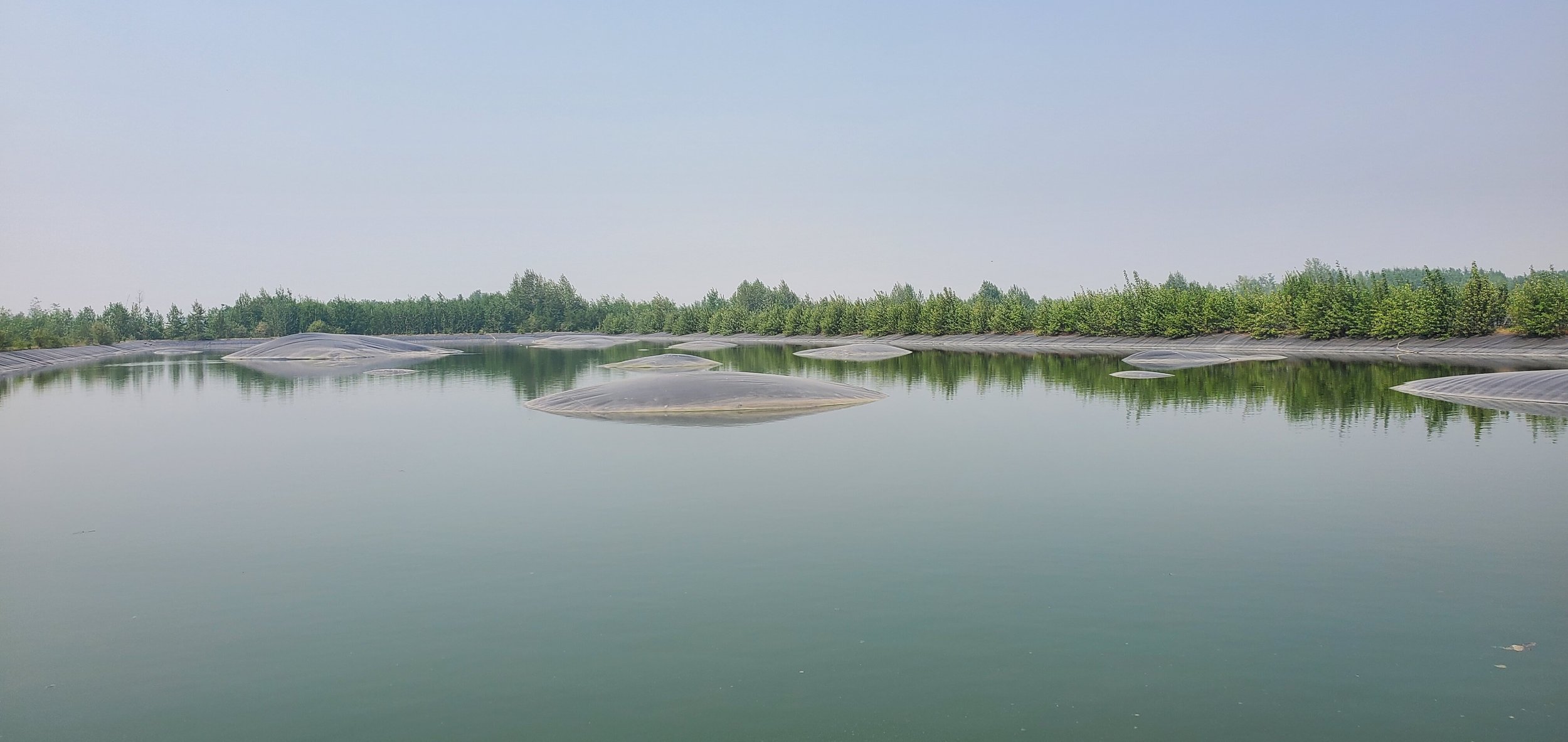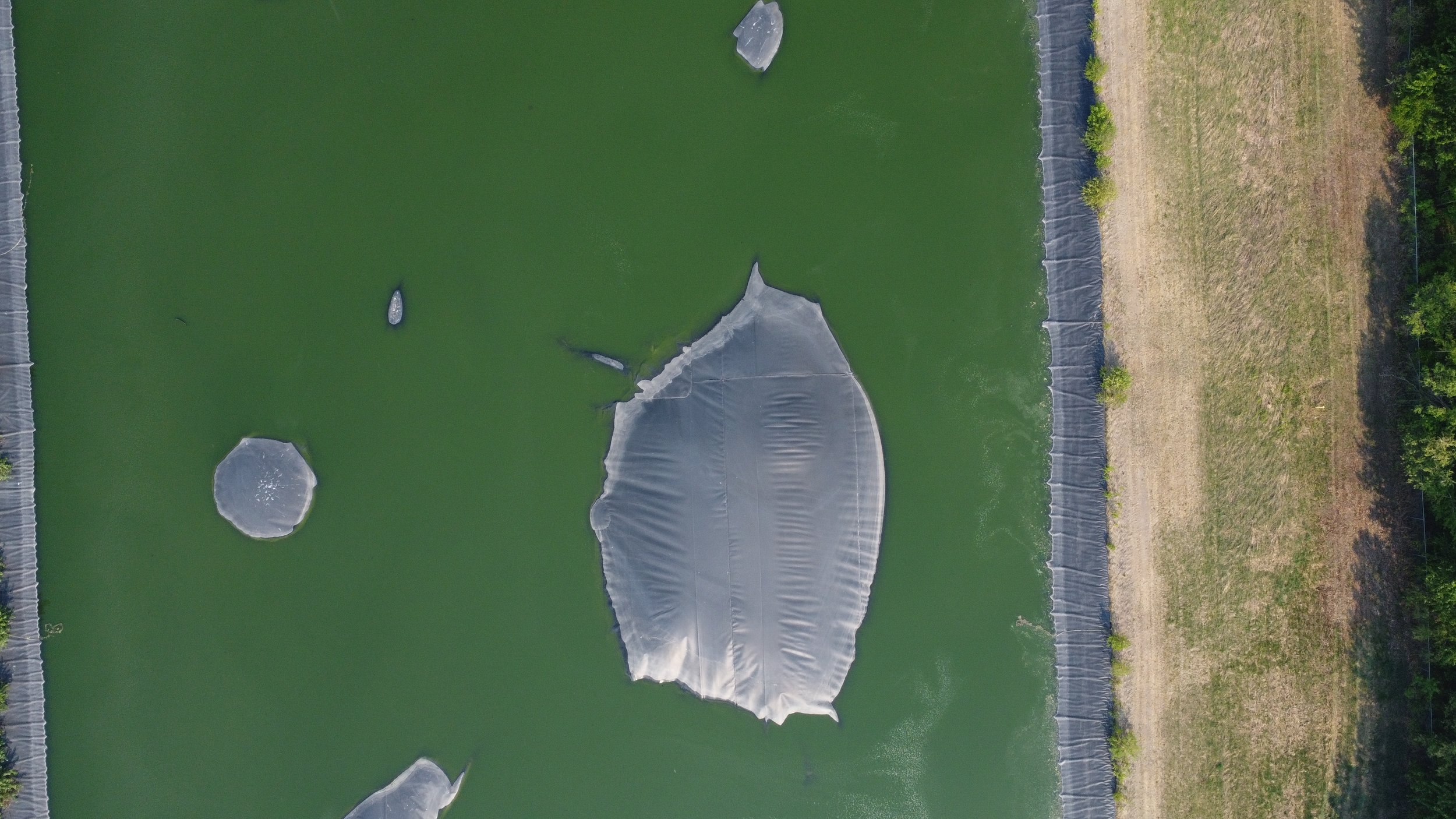Measuring a Wastewater Lagoon’s Loss in Capacity from a Whaled / Blistered Liner in Alberta, Canada
By: Courtney Felton and Andrew Ambrocichuk
Introduction
Situated in Alberta, our client, a wastewater treatment facility, faced the challenge of determining the degree of lagoon treatment capacity reduction caused by a whaled lagoon liner. Serving a population within the province, this facility relied on a lagoon system comprising several cells for wastewater treatment, each lined to prevent seepage. The client’s challenges were to assess the extent of capacity reduction caused by a HDPE liner bubbling in a wastewater lagoon and evaluate the accumulation of sludge within a lagoon featuring a blistered liner.
Wastewater Lagoon Bubbled Liner
Hydrasurvey's Solutions
To determine the extent of capacity reduction caused by the blistered / whaled liner, Hydrasurvey conducted a comprehensive Sludge Survey. This survey involved detailed liner measurements including measuring each blister, determining the maximum depth of the clay liner where the HDPE liner had bubbled, and comprehensive mapping of sludge distribution across the lagoon. These measurements were analyzed to quantify the capacity lost due to the blistered liner.
Large Bubble in Wastewater Lagoon Liner
Client Outcome
The survey revealed that the bubbles were not only visible above the surface but also submerged; therefore, further reducing their treatment capacity. Armed with the findings outlined in the sludge survey report, our client devised a plan for liner repairs to restore their lagoon treatment capacity.
Sludge Thickness Map from a Wastewater Lagoon
3D Sludge Depths in a Wastewater Lagoon with a Bubbled Liner




